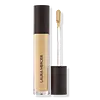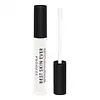Laura Mercier Flawless Fusion Ultra Longwear Concealer Versus Sephora Collection Best Skin Ever High Coverage Concealer
What's inside
What's inside
 Key Ingredients
Key Ingredients

 Benefits
Benefits

 Concerns
Concerns

 Ingredients Side-by-side
Ingredients Side-by-side

Water
Skin ConditioningCyclopentasiloxane
EmollientDodecane
PerfumingGlycerin
HumectantCetyl PEG/PPG-10/1 Dimethicone
EmulsifyingButylene Glycol
HumectantHeptyl Undecylenate
EmollientPhenyl Trimethicone
Skin ConditioningHydrogendimethylsiloxysilicate
Neopentyl Glycol Diheptanoate
EmollientBis-PEG/PPG-14/14 Dimethicone
EmollientSilica
AbrasiveQuaternium-90 Bentonite
Acrylates/C12-22 Alkyl Methacrylate Copolymer
Tribehenin
EmollientBoron Nitride
AbsorbentPolyglyceryl-3 Diisostearate
EmulsifyingLecithin
EmollientPentylene Glycol
Skin ConditioningDisodium Stearoyl Glutamate
CleansingDimethicone/Vinyl Dimethicone Crosspolymer
Skin ConditioningAscorbyl Glucoside
AntioxidantMagnesium Sulfate
Laureth-7
EmulsifyingPropylene Carbonate
SolventAluminum Dimyristate
Emulsion StabilisingTriethoxycaprylylsilane
Serica
HumectantTrisodium EDTA
Phenoxyethanol
PreservativeCaprylyl Glycol
EmollientChlorphenesin
AntimicrobialMica
Cosmetic ColorantCI 77891
Cosmetic ColorantCI 77491
Cosmetic ColorantCI 77492
Cosmetic ColorantCI 77499
Cosmetic ColorantWater, Cyclopentasiloxane, Dodecane, Glycerin, Cetyl PEG/PPG-10/1 Dimethicone, Butylene Glycol, Heptyl Undecylenate, Phenyl Trimethicone, Hydrogendimethylsiloxysilicate, Neopentyl Glycol Diheptanoate, Bis-PEG/PPG-14/14 Dimethicone, Silica, Quaternium-90 Bentonite, Acrylates/C12-22 Alkyl Methacrylate Copolymer, Tribehenin, Boron Nitride, Polyglyceryl-3 Diisostearate, Lecithin, Pentylene Glycol, Disodium Stearoyl Glutamate, Dimethicone/Vinyl Dimethicone Crosspolymer, Ascorbyl Glucoside, Magnesium Sulfate, Laureth-7, Propylene Carbonate, Aluminum Dimyristate, Triethoxycaprylylsilane, Serica, Trisodium EDTA, Phenoxyethanol, Caprylyl Glycol, Chlorphenesin, Mica, CI 77891, CI 77491, CI 77492, CI 77499
Water
Skin ConditioningCI 77891
Cosmetic ColorantTheobroma Cacao Fruit Powder
Skin ConditioningCaprylyl Caprylate/Caprate
EmollientDimethicone
EmollientIsododecane
EmollientCetyl PEG/PPG-10/1 Dimethicone
EmulsifyingDimethicone/Vinyl Dimethicone Crosspolymer
Skin ConditioningPolyglyceryl-3 Diisostearate
EmulsifyingGlycerin
HumectantPentylene Glycol
Skin ConditioningPropanediol
SolventPEG-30 Dipolyhydroxystearate
EmulsifyingSilica Dimethyl Silylate
EmollientSodium Chloride
MaskingDisteardimonium Hectorite
StabilisingTriethoxysilylethyl Polydimethylsiloxyethyl Hexyl Dimethicone
Skin ConditioningBenzyl Alcohol
PerfumingPropylene Carbonate
SolventSodium Phytate
Hydrolyzed Algin
Dehydroacetic Acid
PreservativeCitric Acid
BufferingPhenethyl Alcohol
MaskingSodium Carrageenan
Emulsion StabilisingCI 77492
Cosmetic ColorantCI 77491
Cosmetic ColorantTocopherol
AntioxidantMaris Sal
Skin ConditioningHelianthus Annuus Seed Oil
EmollientPentaerythrityl Tetraoleate
EmollientMethyl Di-T-Butyl Hydroxyhydrocinnamate
AntioxidantCI 77499
Cosmetic ColorantWater, CI 77891, Theobroma Cacao Fruit Powder, Caprylyl Caprylate/Caprate, Dimethicone, Isododecane, Cetyl PEG/PPG-10/1 Dimethicone, Dimethicone/Vinyl Dimethicone Crosspolymer, Polyglyceryl-3 Diisostearate, Glycerin, Pentylene Glycol, Propanediol, PEG-30 Dipolyhydroxystearate, Silica Dimethyl Silylate, Sodium Chloride, Disteardimonium Hectorite, Triethoxysilylethyl Polydimethylsiloxyethyl Hexyl Dimethicone, Benzyl Alcohol, Propylene Carbonate, Sodium Phytate, Hydrolyzed Algin, Dehydroacetic Acid, Citric Acid, Phenethyl Alcohol, Sodium Carrageenan, CI 77492, CI 77491, Tocopherol, Maris Sal, Helianthus Annuus Seed Oil, Pentaerythrityl Tetraoleate, Methyl Di-T-Butyl Hydroxyhydrocinnamate, CI 77499
Ingredients Explained
These ingredients are found in both products.
Ingredients higher up in an ingredient list are typically present in a larger amount.
This ingredient is a high molecular weight silicone. It has emulsifying and skin conditioning properties.
Ci 77491 is also hydrated iron III oxide. It's sole purpose is to give a red/pink hue to products.
Iron III oxides are classified as inorganic chemicals for coloring.
Synthetically created Ci 77491 is considered safer than those naturally found. This is because the synthetically created version may contain less impurities. Iron oxides are generally non-toxic and non-allergenic.
Learn more about CI 77491Ci 77492 is also hydrated iron III oxide. It's sole purpose is to give a yellow hue to products.
Iron III oxides are classified as inorganic chemicals for coloring.
Synthetically created Ci 77492 is considered safer than those naturally found. This is because the synthetically created version may contain less impurities. Iron oxides are generally non-toxic and non-allergenic.
Learn more about CI 77492Ci 77499 is also hydrated iron III oxide. It is created from mixing red and black iron oxides. This helps give shades of darkness to a product.
Iron III oxides are classified as inorganic chemicals for coloring.
Ci 77891 is a white pigment from Titanium dioxide. It is naturally found in minerals such as rutile and ilmenite.
It's main function is to add a white color to cosmetics. It can also be mixed with other colors to create different shades.
Ci 77891 is commonly found in sunscreens due to its ability to block UV rays.
Learn more about CI 77891This ingredient is a silicone used to improve the texture of products and absorb oil. It does not get absorbed into the skin.
Like other silicones, Dimethicone/Vinyl Dimethicone Crosspolymer helps condition the skin by creating a barrier. In this sense, it can act as an emollient and trap moisture in.
This ingredient is a type of elastomer.
Learn more about Dimethicone/Vinyl Dimethicone CrosspolymerGlycerin is already naturally found in your skin. It helps moisturize and protect your skin.
A study from 2016 found glycerin to be more effective as a humectant than AHAs and hyaluronic acid.
As a humectant, it helps the skin stay hydrated by pulling moisture to your skin. The low molecular weight of glycerin allows it to pull moisture into the deeper layers of your skin.
Hydrated skin improves your skin barrier; Your skin barrier helps protect against irritants and bacteria.
Glycerin has also been found to have antimicrobial and antiviral properties. Due to these properties, glycerin is often used in wound and burn treatments.
In cosmetics, glycerin is usually derived from plants such as soybean or palm. However, it can also be sourced from animals, such as tallow or animal fat.
This ingredient is organic, colorless, odorless, and non-toxic.
Glycerin is the name for this ingredient in American English. British English uses Glycerol/Glycerine.
Learn more about GlycerinPentylene glycol is typically used within a product to thicken it. It also adds a smooth, soft, and moisturizing feel to the product. It is naturally found in plants such as sugar beets.
The hydrophilic trait of Pentylene Glycol makes it a humectant. As a humectant, Pentylene Glycol helps draw moisture from the air to your skin. This can help keep your skin hydrated.
This property also makes Pentylene Glycol a great texture enhancer. It can also help thicken or stabilize a product.
Pentylene Glycol also acts as a mild preservative and helps to keep a product microbe-free.
Some people may experience mild eye and skin irritation from Pentylene Glycol. We always recommend speaking with a professional about using this ingredient in your routine.
Pentylene Glycol has a low molecular weight and is part of the 1,2-glycol family.
Learn more about Pentylene GlycolPolyglyceryl-3 Diisostearate is an emulsifer and emollient. It comes from Isostearic Acid and Polyglycerin-3.
As an emulsifier, it helps stabilize products by preventing oils and water from separating.
This ingredient may not be Malassezia folliculitis, or fungal acne safe.
Learn more about Polyglyceryl-3 DiisostearateThis ingredient is a solvent. It helps dissolve active ingredients and alter the texture of products.
Propylene Carbonate is commonly used in makeup and with clay, such as montmorillonite or bentonite.
Studies show this ingredient to be safe for cosmetics. When it is undiluted, it can cause skin irritation. (It is always diluted in skincare and makeup). This ingredient is water-soluble.
Propylene Carbonate is created from propylene glycol and carbonic acid.
Learn more about Propylene CarbonateWater. It's the most common cosmetic ingredient of all. You'll usually see it at the top of ingredient lists, meaning that it makes up the largest part of the product.
So why is it so popular? Water most often acts as a solvent - this means that it helps dissolve other ingredients into the formulation.
You'll also recognize water as that liquid we all need to stay alive. If you see this, drink a glass of water. Stay hydrated!
Learn more about Water